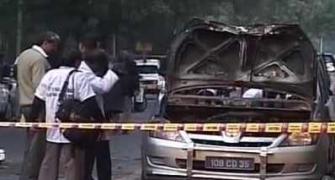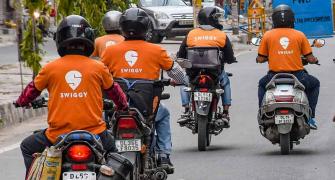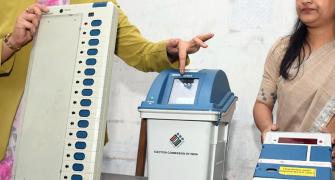The Arabs call it Obwah Lasica, while the rest of the world terms it as a sticky bomb. This is a name that is doing the rounds ever since an attack took place in Delhi on Monday, in which an Israeli Diplomat and three others were injured.
The sticky bomb is probably one of the most convenient bombs that could be used and it has been found that it has often been used used in nIran and Iraq, although its origins can be traced back to World War II.
The bomb is usually the size of a person's fist and is either attached to a magnet or an adhesive. It is usually used by terrorists who carry out a quick operation and want to slip out without being noticed. The size of this bomb makes it very easy to use, so much so, that the person carrying it in his hand often goes unnoticed.
The bomb is usually stuck on to a car, and because of its small size, goes unnoticed. There have been many instances when the sticky bomb has been attached with the help of an adhesive to bumper of a car or on the number plate.
The other method used is to attach the bomb to a magnet, and throw it on to a moving vehicle, while following it. There is no danger whatsoever for the person operating a sticky bomb, since it explodes only with the help of a detonator, and can be done so at a safe distance of up to 100 metres.
Also, the area of the impact is also very less. When attached to the vehicle, the impact is magnified because of the fuel tank of the vehicle, making it more lethal to the person(s) sitting in it.
In the recent past, it has been extensively used by those fighting the American forces in Iraq. There are many instances to show that groups such as Hamas have used this device. Its is used largely to cause fear panic and also an impact.
Most of such bombs have been found to be homemade. A mixture of C4 is combined with an accelerant and then packed with shrapnel. The bomb is always triggered by a detonator; ion most cases, a cell phone.
This is relatively a new concept for India-based groups. If Monday's attack has even a trace of Indian origin in it, then it could well be the beginning of the sticky bomb on Indian soil. The sheer magnitude of the panic would be sufficient to destabilise normal life.
Indian Intelligence agencies say that there is a good chance of some of the Indian modules adapting themselves to use this kind of a bomb, and this only increases the need to be more watchful.





